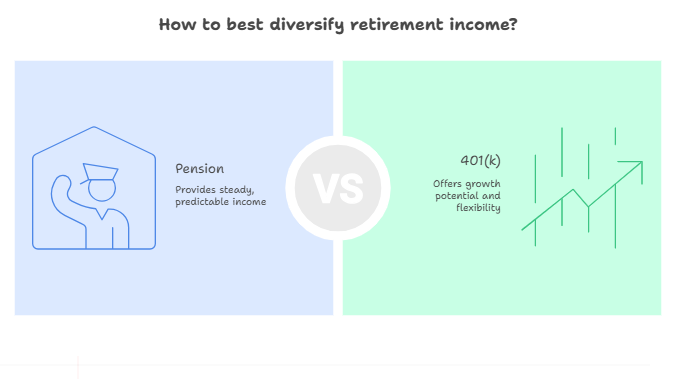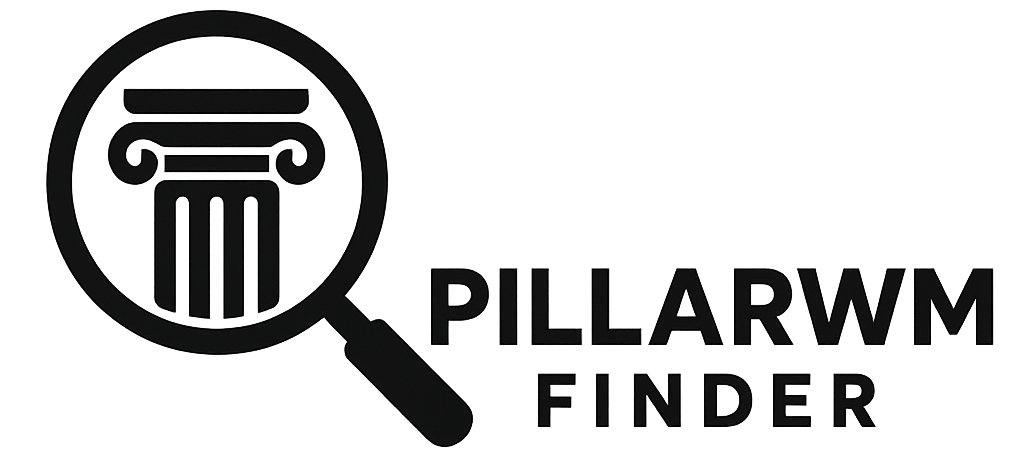
Can You Have a Pension and 401k? Essential Facts for Planning
Understand The Basics
Retirement often hinges on securing a stable income stream, which can come from multiple sources. Many people ask, “Can you have a pension and 401(k) at the same time?” According to Western & Southern Financial Group (source), pensions and 401(k) plans are distinct vehicles, so it is possible to maintain both. Each account carries unique advantages and responsibilities, requiring careful evaluation to maximize retirement savings.
What Is A Pension?
A pension is a defined-benefit plan funded by an employer (and sometimes employees) that provides a fixed income throughout retirement. Some private employers, government agencies, and public-service institutions offer these plans. However, Empower reports that only 15% of private industry workers had access to a traditional pension as of 2022 (source). For individuals who are eligible, a pension can create dependable monthly income for life.
Key Points About 401(k)
A 401(k) is a defined-contribution plan that shifts the savings responsibility to the employee. Contributions often come directly out of wages before taxes. Some employers match a portion of these contributions, providing a helpful boost. According to Protective (source), most private-sector firms now offer 401(k)s rather than pensions, placing the investment decisions and market risk on the individual.
Examine The Benefits

Holding both a pension and 401(k) can significantly diversify retirement income. This arrangement blends the predictability of a pension’s monthly payout with the potential growth and employer match from a 401(k).
Why Have Both?
- Improved Financial Security. A pension alone can be steady but might not meet every long-term need, especially for high-net-worth individuals juggling large or concentrated assets.
- Greater Flexibility. A 401(k) can be withdrawn in various ways: lump sum, annuity purchase, or rollover to an IRA. This can align with different lifestyle goals or tax strategies.
- Enhanced Growth Potential. While a pension’s returns are predetermined by the plan, a 401(k) can be invested in a range of asset classes, giving some retirees opportunities for higher growth.
Potential Risks To Manage
- Market Volatility. 401(k) balances rise and fall with market conditions, adding uncertainty to any retirement plan.
- Complexity. Managing two or more accounts may be challenging, and it might require professional advice or extra time spent on reviewing options.
- Mixed Tax Implications. Each account has specific rules for contributions, penalties, and distributions, which can become complex without strategic planning.
Explore Common Questions
Many wonder about five frequently asked questions regarding “can you have a pension and 401(k)” in one sentence: whether possessing both is legal, whether it affects Social Security payments, whether 401(k) early withdrawals incur penalties, whether taxes are handled differently, and whether timing matters when enrolling in each plan.
Tax Considerations
Contributions to a pension, except for Roth contributions, can be tax-deductible. Earnings within a 401(k) or pension also grow tax-deferred, helping investments compound more effectively. Yet taxes ultimately apply upon distribution. Deciding on the right mix of accounts can be simpler when factoring in potential future withdrawals, as well as any catch-up contributions allowed for those over 50 (Merrill Edge).
Withdrawal Options
Upon retiring or leaving employment, individuals usually can leave funds in the plan, roll them over to a different plan or IRA, convert them to a Roth (if eligible), or take a lump-sum distribution (New York Life). With pensions, the monthly payments often begin at a certain age, while 401(k)s may allow penalty-free withdrawals at 59½ or as early as 55 under special conditions.
Look At Key Retirement Moves

Making the most of both a pension and 401(k) involves looking at how these vehicles align with broader retirement investment options. The right combination can stretch across multiple decades and serve as a cushion for market downturns.
Combining Retirement Vehicles
Retirees sometimes maintain their pension benefits for fixed income while using a 401(k) to handle unpredictable costs. Those seeking further growth may consider an IRA rollover or explore additional resources like pension vs annuity plans. Each approach requires assessing current and future needs, as well as personal risk tolerance.
Next Steps For Savvy Savers
- Calculate total expected retirement income from pensions, 401(k)s, IRAs, and other investments.
- Use professional guidance or online calculators to evaluate long-term financial health.
- Weigh the pros and cons of lump-sum pension payouts versus monthly installments.
- Keep the employer match in mind, as it can substantially boost the 401(k) balance over time.
Conclusion
In today’s landscape, having both a pension and 401(k) is absolutely feasible and, in some cases, highly advantageous. While pensions remain an excellent source of guaranteed income, 401(k)s add flexibility and potential for higher returns. Balancing both requires diligence, especially for high-net-worth individuals whose wealth management strategies may involve complex solutions. The outcome can be a retirement that offers stability, growth, and peace of mind.
Showcase your recognition by adding our award badge to your website! Simply copy the code below and embed it on your site to highlight your achievement.

Recent Posts
Retirement Planners in Los Angeles to Consider
Los Angeles, a city synonymous with opportunity and innovation, is...
Retirement Planners in New York to Consider
Navigating the financial landscape of New York can be overwhelming,...





